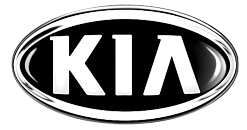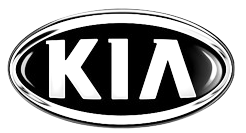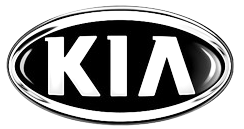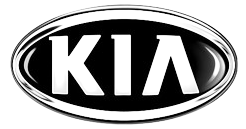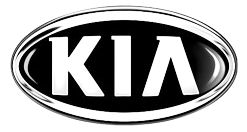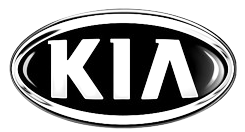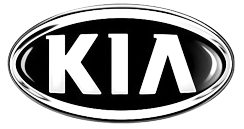When a car gets wrecked, it’s not always the end of the road for it. Sometimes, especially with popular models like Kia, these cars can have a whole second life. We’re talking about the journey of a wrecked Kia car into spare parts. It’s a process that takes a damaged vehicle and turns it into something useful again, helping other car owners and the environment. Let’s explore how this happens.
Key Takeaways
- A wrecked car’s future, including the journey of a wrecked Kia car into spare parts, often starts with an insurance assessment to see if it’s a total loss.
- Cars deemed a total loss can be sold at auction, frequently ending up in salvage yards that act as big warehouses for car parts.
- Salvage yards carefully take apart wrecked cars to find usable components, like engines, transmissions, or body panels, for resale.
- Extracted Kia parts go through checks, cleaning, and cataloging to make sure they are ready and priced right for customers.
- Recycling car parts helps reduce waste and supports a more sustainable approach to the automotive industry.
The Initial Assessment Of A Damaged Kia
When a Kia ends up in a wreck, the very first step is figuring out what kind of shape it’s really in. This isn’t just about a quick look; it’s a detailed evaluation to see if fixing it makes any sense at all. This assessment is the starting point for everything that follows, from insurance claims to potential resale.
Determining Total Loss Status
This is where the numbers game really begins. Repair shops and insurance adjusters look at the cost to fix the Kia versus what the car was worth right before the accident. If the repair bill is high enough, often more than 70-80% of the car’s market value, the insurance company will likely declare it a ‘total loss’. This doesn’t mean the car is completely destroyed, but rather that it’s not economically sensible to repair.
| Factor | Description |
|---|---|
| Repair Cost | Estimated price to fix all damage. |
| Actual Cash Value (ACV) | The car’s market worth before the incident. |
| Loss Threshold | Typically a percentage of ACV (e.g., 75%). |
Insurance Company’s Role In Salvage
Once a car is declared a total loss, the insurance company usually takes ownership of the vehicle. They’ll then decide what to do with it. Sometimes, they’ll sell it directly to a salvage yard or through a specialized auction. Their main goal is to recoup some of the money they’re paying out on the claim. They’re not in the business of fixing cars, so they’re looking for the quickest and most efficient way to move the damaged vehicle off their books.
The insurance company’s decision here sets the stage for the car’s next chapter. It’s a business transaction focused on financial recovery.
Owner’s Decision On The Vehicle’s Future
Even if the insurance company declares the Kia a total loss, the owner might still have options. They could choose to buy the car back from the insurance company for its salvage value. This might be a good idea if the owner believes they can repair it more cheaply or if they want to keep it for parts. If they don’t buy it back, the insurance company handles the sale, and the owner receives the settlement amount minus the salvage value if they kept it. It’s a big decision that depends on the owner’s circumstances and their plans for the vehicle.
From Wreckage To Salvage Yard

So, your Kia got into a bit of a fender bender, or maybe something more serious. When a car is declared a total loss by the insurance company, it doesn’t just disappear. Instead, it often heads to a place where its remaining useful life can be extended – a salvage yard. These yards are like big holding areas for cars that aren’t roadworthy anymore but still have parts that someone else might need.
The Auction Process For Totaled Cars
When an insurance company pays out on a totaled vehicle, they usually take ownership of the wreck. What happens next? Often, these cars are put up for auction. Think of it like a big sale, but instead of furniture or electronics, it’s damaged cars. Buyers at these auctions are typically licensed salvage yards, dismantlers, or sometimes even individuals looking for parts or a project car. The price a car fetches at auction depends on a lot of things – its make and model, how much damage it sustained, and what parts are still in good shape. It’s a competitive environment, and the goal for the salvage yard is to buy these vehicles at a price that allows them to make a profit after dismantling and selling the parts.
Salvage Yards As Part Depots
Salvage yards are essentially warehouses for car parts. They’re not just random piles of junk, though. Good salvage yards are organized, with vehicles often sorted by make and model. They serve a really important role in the automotive ecosystem. Instead of a perfectly good alternator or a working transmission being tossed into a landfill, it gets a second chance. This is especially true for older or less common car models where new parts might be hard to find or very expensive. These yards become a go-to spot for mechanics and car owners looking for specific components to fix their own vehicles.
Dismantling For Usable Components
Once a car arrives at the salvage yard, the real work begins. Skilled technicians carefully go through the vehicle, identifying which parts are still functional and have resale value. This isn’t just a quick grab-and-pull operation. It involves a methodical process of removing components without causing further damage. Things like engines, transmissions, body panels, headlights, interior seats, and even smaller electronic modules are candidates for removal. The goal is to extract as many usable parts as possible, making sure they are handled with care so they can be cleaned, tested, and prepared for sale.
The process of salvaging parts from a wrecked vehicle is a careful balance. It requires knowing which components are likely to be in demand and how to remove them efficiently without damaging them. It’s a practical application of mechanical knowledge aimed at resource recovery.
Here’s a look at some common parts salvaged:
| Part Category | Examples |
|---|---|
| Powertrain | Engine, Transmission, Differential |
| Body | Doors, Hoods, Fenders, Bumpers |
| Electrical | Alternator, Starter, Radios, ECUs |
| Interior | Seats, Dashboard components, Door panels |
| Suspension | Shocks, Struts, Control Arms |
The Journey Of A Wrecked Kia Car Into Spare Parts
Once a Kia is declared a total loss and makes its way to a salvage yard, its next chapter begins. It’s not just scrap metal; it’s a treasure trove of potentially useful components. The process of turning wreckage into usable parts is quite involved.
Identifying Valuable Kia Components
Not every part of a wrecked Kia is worth saving. The focus is on components that are still functional and in demand. This often includes engine parts, transmissions, body panels (like doors, fenders, and hoods), interior pieces (seats, dashboards, door panels), and electronic modules. The goal is to salvage parts that can be easily swapped into another Kia of the same or a compatible model. Mechanics and salvage yard experts know which parts tend to fail less often and are therefore more likely to be in good condition even after an accident. Things like headlights, taillights, and even smaller items like mirrors or window regulators can also be valuable.
The Process Of Part Extraction
Extracting these parts is a careful process. Technicians, often with specialized tools, systematically dismantle the vehicle. They’ll start by draining fluids like oil, coolant, and brake fluid, which are either recycled or disposed of properly. Then, they’ll begin removing the identified components. This isn’t just a quick yank; it involves disconnecting wires, hoses, and mounting bolts. For larger items like engines or transmissions, it might require specialized lifting equipment. The aim is to remove the part without causing further damage to it or to other salvageable components.
Quality Checks For Resale Parts
After a part is removed, it doesn’t just get tossed onto a shelf. Each component undergoes a thorough inspection. This involves checking for physical damage, wear and tear, and functional integrity. For example, an engine control unit might be tested to see if it’s operating correctly. A transmission might be checked for smooth shifting. Body panels are inspected for rust or significant dents. This quality control step is super important because the reputation of the salvage yard depends on selling reliable parts. If a part fails shortly after installation, it reflects poorly on the seller and can lead to returns and unhappy customers.
The transformation from a damaged vehicle to a source of replacement parts is a testament to the resourcefulness within the automotive industry. It’s a practical application of giving a second life to components that would otherwise be lost.
| Component Type | Common Checks | Potential Issues |
|---|---|---|
| Engine Parts | Visual inspection, wear marks | Cracks, seized components, leaks |
| Transmission | Fluid condition, shifting smoothness | Leaks, grinding noises, internal damage |
| Body Panels | Denting, rust, paint condition | Structural compromise, significant corrosion |
| Electronics | Functional testing, error codes | Water damage, burnt circuits, connectivity issues |
Preparing Kia Parts For The Market

Once those usable Kia parts are pulled from the wreckage, they aren’t quite ready for a new life just yet. Think of it like getting a car ready for a dealership lot after a major service – it needs some attention. First up is cleaning and refurbishing. Depending on the part, this could mean anything from a simple wipe-down to more involved work like repainting a fender or rebuilding a starter motor. The goal is to make the part look as good as possible and function reliably.
Then comes the inventory part. Every single component needs to be logged. This isn’t just a quick scribble in a notebook. We’re talking about detailed descriptions, part numbers, condition reports, and where it’s stored. This cataloging is super important for knowing what you have and for customers to find what they need.
Finally, there’s the pricing. This is where things get a bit tricky. You have to consider the original cost of the part, its condition, how rare it is, and what similar parts are selling for. It’s a balancing act to price it competitively but also make a profit.
A well-organized inventory system is the backbone of any successful used auto parts business. Without it, finding specific components becomes a time-consuming chore, leading to lost sales and frustrated customers. It’s the difference between a quick transaction and a drawn-out search.
| Part Type | Cleaning Method | Refurbishment Level | Typical Condition |
|---|---|---|---|
| Engine Component | Degreasing, compressed air | Minor repairs, testing | Good to Excellent |
| Body Panel | Washing, sanding, priming | Dent repair, paint matching | Fair to Good |
| Interior Trim | Steam cleaning, upholstery treatment | Minor crack repair | Fair to Excellent |
| Electrical Module | Contact cleaning, diagnostic check | Firmware update (if applicable) | Good to Excellent |
Selling And Distributing Kia Spare Parts
Online Marketplaces For Auto Parts
So, you’ve got a bunch of good Kia parts ready to go. Now what? The internet is your best friend here. Think eBay, Amazon, and specialized auto parts websites. These places let you reach a huge number of people who are actively looking for what you have. Listing your parts online means you’re not just selling locally; you’re opening yourself up to a national, even international, market. It takes a bit of effort to write good descriptions and take clear photos, but it really pays off. You’ll want to be specific about the part number, the car model it fits, and its condition. This helps buyers find exactly what they need and avoids headaches later.
Direct Sales To Repair Shops
Don’t forget about the local mechanics and body shops. They’re always in need of good quality used parts to keep their repair costs down for their customers. Building relationships with these businesses can lead to steady sales. You might even be able to set up a system where they call you first when they need a specific Kia component. It’s a good way to move parts quickly and build a reliable customer base. Sometimes, a quick phone call or a visit to the shop can be more effective than a thousand online listings.
Shipping And Logistics Of Parts
This is where things can get a little tricky, but it’s totally manageable. Once you make a sale, you need to get the part to the buyer. For smaller items, standard shipping services work fine. Just make sure you pack them well so they don’t get damaged in transit. Larger parts, like engines or body panels, might need special freight shipping. You’ll need to figure out the best way to package them securely and find a shipping company that handles bulky items. Careful packaging and reliable shipping are key to happy customers and repeat business.
Getting the right part to the right person without any fuss is the goal. It means thinking about how to pack things so they don’t break and how to get them there on time. For mechanics, it means they can fix cars faster. For online buyers, it means their car gets back on the road sooner. It’s all about making the process smooth for everyone involved.
| Part Type | Average Shipping Cost (Domestic) | Handling Time |
|---|---|---|
| Small Electronics (e.g., sensors) | $10 – $25 | 1-2 business days |
| Engine Components (e.g., alternators) | $25 – $75 | 2-3 business days |
| Body Panels (e.g., doors, fenders) | $100 – $300+ | 3-5 business days |
| Engines/Transmissions | $200 – $500+ | 5-7 business days |
Environmental Considerations In Kia Part Recycling
Reducing Waste Through Part Reuse
When a Kia gets wrecked, it’s easy to think of it as just junk. But a lot of those parts are still perfectly good. Instead of making new ones, which takes a ton of energy and resources, we can just use the ones that are already there. Think about it: a used transmission or a set of headlights might have plenty of miles left in them. This whole process of salvaging and reusing parts is a big deal for cutting down on what ends up in landfills. Every part we reuse is one less part that needs to be manufactured from scratch. It’s a smart way to keep usable stuff out of the trash heap and give it a second life.
Recycling Of Non-Usable Materials
Of course, not every single piece of a wrecked Kia can be reused as a whole part. Some things are just too damaged, or they’re materials that can be broken down and remade into something new. Metals like steel and aluminum are prime examples. They can be melted down and reformed into new car parts, or even other metal products. Plastics, glass, and rubber also get processed. It’s not as simple as just tossing them in a bin, though. There’s a whole system to sort these materials, clean them up, and get them ready for the recycling plants. It’s a bit like a complex sorting game, but the payoff is less raw material extraction from the earth.
| Material Type | Common Kia Components | Recycling Process | End Products |
|---|---|---|---|
| Metals | Engine block, frame, body panels | Shredding, melting, casting | New metal parts, construction materials |
| Plastics | Bumpers, interior trim, fluid tanks | Shredding, washing, pelletizing | New plastic components, fibers |
| Glass | Windows, mirrors | Crushing, melting | New glass, insulation |
| Rubber | Tires, hoses | Grinding, vulcanization | Flooring, playground surfaces, new rubber goods |
The Circular Economy In Automotive
This whole idea of reusing and recycling parts fits right into what people call the circular economy. Instead of the old way – make, use, and throw away – the circular economy tries to keep things in use for as long as possible. For cars, this means designing them so parts are easier to take out and reuse, making sure salvage yards are efficient, and finding good ways to recycle what’s left. It’s about closing the loop, so to speak.
The goal is to move away from a linear model where resources are consumed and discarded, towards a system where materials are kept in circulation, minimizing waste and the need for virgin resources. This approach benefits the environment and can also create new economic opportunities in repair, refurbishment, and recycling industries.
It’s a big shift, but when you think about how many cars are on the road, even small changes in how we handle them when they’re done can make a real difference for the planet.
The Second Life of a Wrecked Kia
So, that wrecked Kia? It’s not just scrap metal. It’s a whole process, really. From being declared a total loss to getting picked apart for usable bits, it’s kind of amazing how much life can be squeezed out of a car even after a crash. Those parts, like engines, transmissions, or even just a working headlight, can help someone else get their own car back on the road without breaking the bank. It’s a whole system that keeps cars running, just in a different way. It makes you think about what happens to cars when we’re done with them, and how much of it can actually be useful again. Pretty neat, right?


